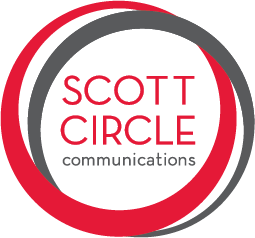Another Round with The Hill’s Maggie Miller
By Elizabeth Harmon
There is no right answer on the best way to pitch a reporter. Reporters and their outlets have different processes, deadlines and expectations. At Scott Circle Communications we value journalists, their work and time, and strive to make their jobs a little easier. In an effort to highlight the importance of the PR and journalism relationship and learn how PR pros can improve and build our relationships with reporters, we are introducing a new series: Another Round. Our first interview features star cybersecurity reporter at The Hill, and my friend, Maggie Miller.
Describe your job in one sentence.
I report on cybersecurity policy, very specifically congressional issues -sometimes I am the unofficial election security reporter!
How many PR pitches do you get a day?
I get a lot, probably between 50-100 a day, on top of other emails. My email inbox can get overwhelming.
About 30% of these pitches are pushing experts. These pitches can be super helpful - for example I was working on a story recently, and got an email in my inbox for an expert that would be a perfect fit for the topic. Sometimes it is serendipity!
How do you balance such a busy inbox?
To the credit of PR professionals, around 90% of pitches are relevant to my beat. I’ve gotten better at looking at PR pitches and evaluating if the pitch could be a story that will work for The Hill. As my editor says, our audience is everybody, spanning from well-informed cybersecurity professionals to someone who doesn't have a computer. When I get pitches, I ask: “Would the average American be interested in this, and would this get clicks?”
I receive a lot of studies, for example, that I find interesting, but have to think about it as a larger story. Unless it is an explosive report, I know if I pitch the study to my editor as a standalone story it won’t work-- but the findings could be used in a larger story!
What is a regular day on the job for you (pre-pandemic)?
At The Hill, we’re encouraged to be out in the field. Normally, I spend 3-4 days of the week working in the press rooms on Capitol Hill. The first thing I do in the morning is check my emails and Twitter to get a run down of the day’s news and make sure I haven’t missed any breaking news overnight. Editors send out requests for two types of stories- longer stories that publish around two times a week and shorter, more frequent blog posts. The longer stories I work on showcase larger trends we are seeing and I spend my day speaking with multiple experts. I also work with our social media team that monitors the news 24/7 and shares relevant news for potential stories. These stories are usually shorter breaking news posts that do not require a lot of outside reporting.
On the Hill, I’m going to votes, talking to members of Congress, setting up coffee dates with press representatives, and trying to get some writing in there to meet my deadlines (usually around 4-5 pm). Overall my day is a lot of multitasking. One thing I can say about this job is I am never bored.
What makes a pitch stand out to you?
Big companies and major names related to my beat stand out. If Google or Amazon are named in the pitch, I will probably read it closer. But it’s also okay if they don’t!
Most journalists really mean well and know work goes into the pitches. As much as I would like to, I don't have time to read pitches all the way through. I usually read the subject and the first line or paragraph. If you attract a journalist’s attention in the first few lines, they will 100% read your entire pitch.
What is one thing you would change about the PR journalist relationship?
The sheer amount of pitches? While my PR relationships are essential to many of the stories I write, the amount of pitches I receive can be overwhelming. It is always apparent when you get added to a media list. Be more judicious on who you are reaching out to. Search the journalist's name and look at the last five stories they wrote. If your pitch is out of left field for them, don't send the pitch because they likely won’t respond.
Also, be aware of timing when you pitch. Unless it’s breaking news, I do not recommend sending pitches between 5 and 6 pm. That’s when we are filing stories, newsletters - kind of a busy time!
Turning the table - What is one question you have for PR pros?
What is one thing you wish journalists knew about how PR pitches are put together and the process of reaching out to journalists?
Who is your dream reporter that you’d want to get “another round” with?
Katie Couric- I've always admired how she pursued different ways of looking at the news and informing people. She is an amazing role model - a woman who has been in the business for a long time. I would love to get her take on her career, how she has covered different areas and maybe cry a little.
Editor’s Note: This interview has been edited and condensed for clarity.
